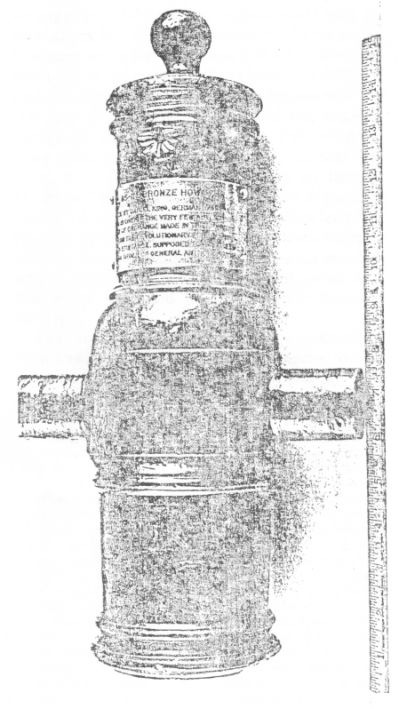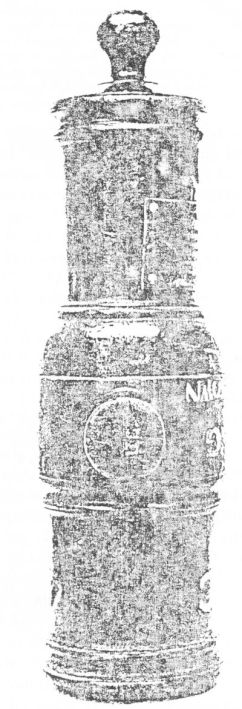 |  |
|
Two views of a marked King howitzer. This specimen is representative of the majority of its type.
Photograph courtesy of the West Point Museum. | |
|
Eight of the tubes were received at Pittsburgh a short time later, for Wayne acknowledged their arrival on 10 August, noting that they were
"without wheels or Carriages."11
Considering the eagerness with which Wayne awaited the howitzers, there can be little doubt that he was not long in putting his artillerymen to practice with them. Writing Knox on 13 September he said he was delighted with them, but suggested that should more howitzers be contemplated, they should be made with bores an inch larger, so that the hand could be introduced into the bore to place the charge of powder in the chamber, thus making loading both easier and faster. Knox quickly replied that it was not necessary to insert the hand into the bore in loading,12 advising that he would forward some samples of fixed ammunition, and that 2500 shells were already on the way. Unfortunately the gunners soon found that the design of the little howitzers was inadequate, the trunnions either bending or breaking off with the first discharges. Sometime during the summer Wayne sent several of the damaged pieces back to Philadelphia13 and asked that replacements be cast. Knox assured him on 12 October that they would be replaced; in fact an entry for four additional howitzers dated 31 August in the quartermaster record book14 seems to indicate that Knox had already made arrangements to have the replacements cast. | |
|
Back Next | |